In the vast landscape of modern manufacturing, there’s a silent giant that shapes the world around us—hydraulic presses. These remarkable machines, often unseen, play a pivotal role in the production of countless products we rely on daily. As we delve into the intricacies of hydraulic press manufacturing, it’s fascinating to explore the evolution of these machines, their key components, and the meticulous process behind their creation. With advancements in technology and their indispensable role across various industries, the future of hydraulic presses looks promising, filled with innovations and trends that promise to redefine the manufacturing landscape.
The Power Behind the Scenes: Understanding Hydraulic Presses
Hydraulic presses may seem like everyday pieces of equipment, but they are the unsung heroes of many industrial processes. These powerful machines operate on the principle of hydraulic force, converting fluid pressure into mechanical force, and they are instrumental in shaping the modern world. Let’s delve into the fascinating world of hydraulic presses and understand the power behind the scenes.
The heart of a hydraulic press is its hydraulic system, which consists of a pump, reservoir, cylinders, and valves. The pump, typically driven by an electric motor, moves the hydraulic fluid through the system. This fluid, often oil or another hydraulic fluid, is what enables the press to exert immense force. The pressure of the fluid is directly proportional to the area it’s applied over, making hydraulic presses capable of exerting forces ranging from a few tons to thousands of tons.
One of the most remarkable aspects of hydraulic presses is their versatility. They can be found in a variety of industries, from automotive to aerospace, and from manufacturing to pharmaceuticals. The ability to customize the size, speed, and force of the press allows for a wide range of applications. For instance, in metalworking, hydraulic presses are used for bending, forming, and deep drawing operations. In the medical industry, they help in the production of precision instruments and prosthetics.
The history of hydraulic presses dates back to ancient times, but the modern version we use today has evolved significantly. Early hydraulic presses were simple machines that used water as the hydraulic fluid. It wasn’t until the 19th century that oil became the preferred fluid due to its better lubricating properties and ability to withstand higher pressures. The advent of the internal combustion engine also played a crucial role in the development of modern hydraulic systems.
The components of a hydraulic press are not just mechanical; they are a testament to engineering ingenuity. The cylinder is the core component where the pressure is generated. It consists of a hollow tube that can be either single-acting (pushing force only) or double-acting (pushing and pulling force). The hydraulic fluid, when pressurized, moves the ram (the movable part of the cylinder) with incredible force, allowing for heavy-duty operations.
Hydraulic presses are not just about brute force; they are about precision and control. The valves within the system regulate the flow of hydraulic fluid, ensuring that the press operates at the desired pressure and speed. These valves can be manually controlled or automated, depending on the complexity of the task. The control systems of modern hydraulic presses are sophisticated, allowing for real-time adjustments and ensuring that the press operates safely and efficiently.
In the manufacturing process, the precision and consistency of hydraulic presses are invaluable. They can be programmed to perform repetitive tasks with the same level of accuracy, which is crucial in mass production. This consistency not only ensures high-quality products but also reduces waste and increases productivity. The ability to handle large workpieces with ease also means that hydraulic presses can significantly speed up the manufacturing process.
Despite their power and complexity, hydraulic presses are designed with safety in mind. The risk of accidents is minimized through various safety features such as emergency stop buttons, pressure relief valves, and protective guards. Operators are also trained to handle these machines responsibly, knowing the potential risks and how to mitigate them.
In recent years, there have been significant advancements in the technology behind hydraulic presses. The integration of computer numerical control (CNC) systems has allowed for more precise and automated operations. These systems can be programmed to execute complex sequences of actions, making hydraulic presses even more versatile and efficient. Additionally, the development of new materials and coatings has improved the lifespan and performance of these machines.
The role of hydraulic presses in various industries cannot be overstated. They are essential in the production of vehicles, aircraft, and many other metal components. In the construction industry, they are used for tasks such as concrete curing and foundation work. Their presence is felt across the board, from the smallest parts of a smartphone to the towering skyscrapers that dominate city skylines.
As we look to the future, the evolution of hydraulic presses continues. Innovations such as energy recovery systems are being developed to make these machines more environmentally friendly and cost-effective. The integration of IoT (Internet of Things) technology promises even greater connectivity and predictive maintenance capabilities, ensuring that hydraulic presses remain at the forefront of modern manufacturing.
In conclusion, hydraulic presses are more than just powerful machines; they are integral to the efficiency and quality of modern manufacturing. Their ability to exert immense force with precision and control has made them indispensable in numerous industries. As technology advances, these machines will undoubtedly continue to evolve, shaping the future of production and innovation.
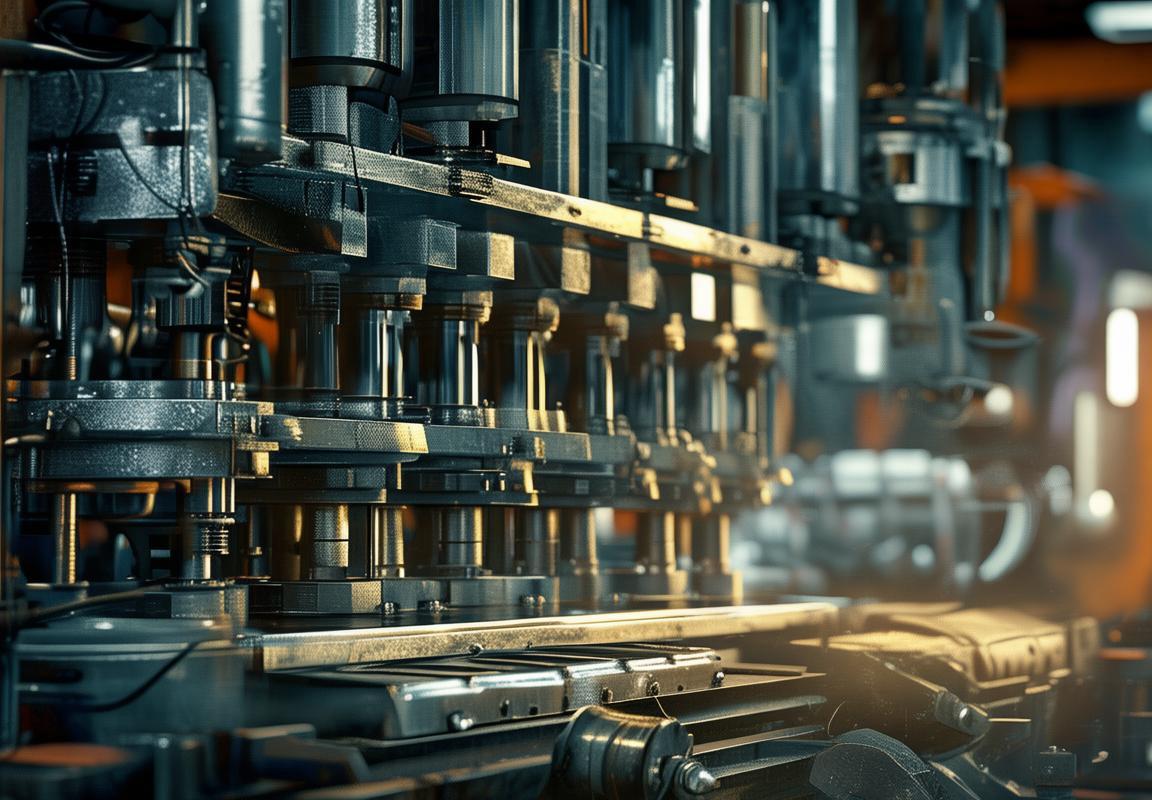
The Evolution of Hydraulic Press Manufacturing
Hydraulic press manufacturing has come a long way since its inception, evolving from simple machines to sophisticated tools of precision and power. The journey of this industry reflects the relentless pursuit of efficiency, innovation, and adaptability.
Early hydraulic presses were rather rudimentary, primarily used for forging and shaping metals. These early models were often large, with heavy cast iron frames and simple cylinders. They operated on the principle of Pascal’s Law, which states that pressure applied to a fluid is transmitted equally in all directions. The power source was typically a steam engine or a waterwheel, which was then used to drive the hydraulic pump that generated the necessary pressure.
As the industrial revolution gathered steam, so did the demand for stronger, faster, and more reliable hydraulic presses. The introduction of electric motors in the late 19th century marked a significant shift, allowing for greater control and precision. These new electric hydraulic presses were smaller and more versatile, which made them suitable for a wider range of applications.
The mid-20th century saw another leap in hydraulic press technology. The development of high-pressure hydraulic systems allowed for greater force to be exerted over a smaller area, which was ideal for precision forming processes. This era also witnessed the rise of hydraulic presses with multiple hydraulic circuits, enabling simultaneous operations and further increasing efficiency.
The integration of computerized control systems in the late 20th century revolutionized hydraulic press manufacturing. These CNC (Computer Numerical Control) presses allowed for complex programming, which could be easily adjusted to accommodate various parts and processes. The introduction of servo-hydraulic systems brought even more precision, with the ability to modulate pressure and speed with incredible accuracy.
In the 21st century, the focus has shifted towards energy efficiency and environmental sustainability. Modern hydraulic press manufacturing incorporates advanced materials, such as lightweight alloys and composites, which reduce the overall weight of the machine while maintaining structural integrity. Additionally, variable displacement pumps have become standard, optimizing energy use by adjusting flow rates to match the requirements of the specific operation.
The automation of hydraulic press manufacturing has also seen considerable advancements. Automated guided vehicles (AGVs) and robotics have been integrated into the production process, reducing the need for manual labor and increasing throughput. These systems can handle raw materials, transport parts, and even perform some assembly tasks, significantly boosting productivity.
Safety has always been a cornerstone of hydraulic press manufacturing, and this remains true today. Modern presses are equipped with advanced safety features, including emergency stop systems, safety guards, and collision detection. These measures protect both the machinery and the operators, ensuring a secure working environment.
Innovation continues to drive the evolution of hydraulic press manufacturing. The rise of additive manufacturing has prompted the development of presses capable of hybrid processes, combining traditional hydraulic forming with 3D printing. This allows for the creation of complex shapes and structures that were previously unattainable.
The evolution of hydraulic press manufacturing is not just a story of technological progress; it’s a testament to human ingenuity and the relentless quest for efficiency. From the humble beginnings of steam-driven machines to the high-tech, energy-efficient systems of today, hydraulic presses have become an indispensable part of the modern manufacturing landscape. As the industry continues to evolve, one can only imagine the new possibilities and applications that lie ahead.
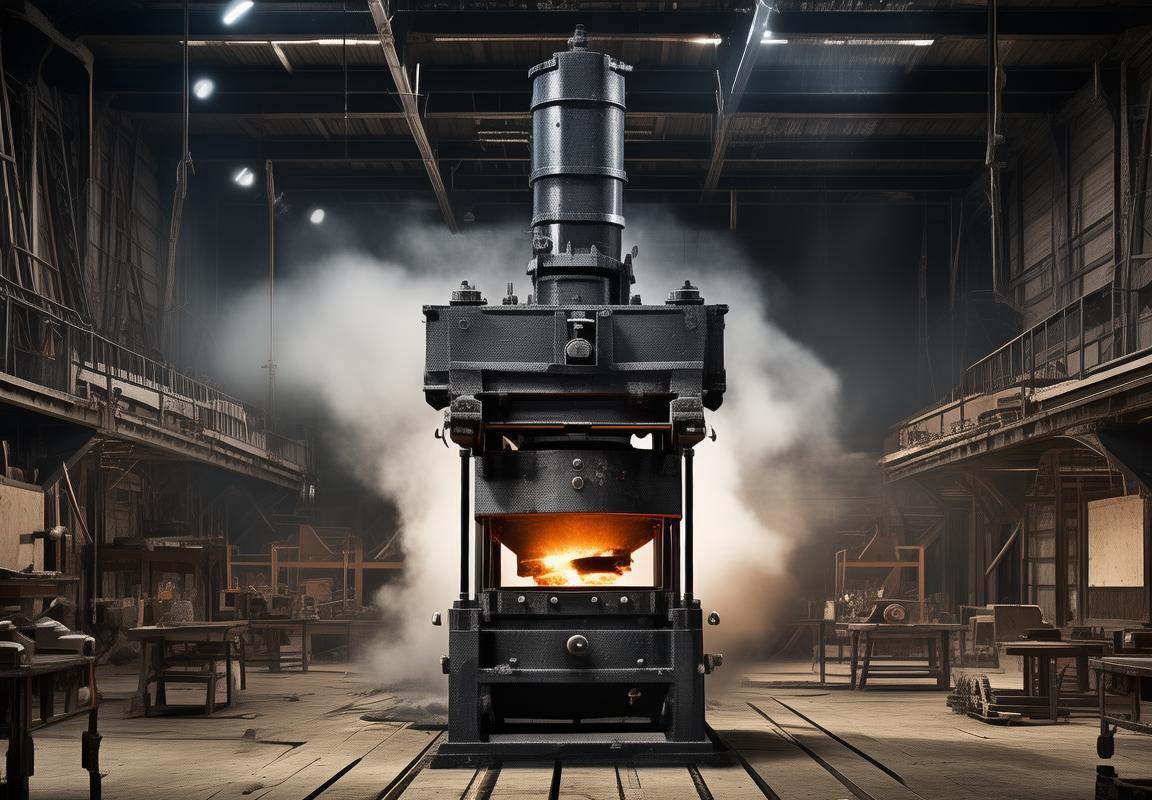
Key Components of a Hydraulic Press
In the intricate world of hydraulic press manufacturing, the heart of these robust machines lies in their key components, each playing a crucial role in the press’s ability to exert immense force. Here’s a closer look at the essential parts that make up a hydraulic press:
The frame of a hydraulic press is its backbone, providing the structural integrity and stability necessary to withstand the immense pressure and force generated during operation. Typically made from steel, the frame is designed to be rigid and durable, ensuring that the press can maintain its shape and performance over time. Its robust construction also serves as a shield, protecting the internal components from external forces.
The cylinder is a pivotal component in a hydraulic press, responsible for the linear motion that drives the press’s ram. These cylinders are often made from high-strength steel and can be either single-acting or double-acting. In a single-acting cylinder, the ram moves in one direction as hydraulic fluid is forced into it, and it returns to its original position under spring tension or gravity. Double-acting cylinders, on the other hand, allow the ram to move in both directions, offering greater versatility and control.
Hydraulic fluid, often oil-based, is the lifeblood of a hydraulic press. It is circulated through the system to create the pressure that moves the ram. The quality and type of hydraulic fluid used can significantly impact the performance and lifespan of the press. It must be resistant to heat, wear, and chemical breakdown, ensuring smooth operation and reducing the risk of leaks or contamination.
Pistons are the parts within the cylinder that convert the pressure of the hydraulic fluid into linear force. They are typically made from materials like bronze or cast iron, which can withstand the high pressures and temperatures within the hydraulic system. The design of the piston can affect the press’s force output and precision, with some featuring special coatings to reduce friction and improve efficiency.
Valves are crucial for controlling the flow of hydraulic fluid within the press. They regulate the pressure, direction, and speed of the fluid, ensuring that the press operates safely and effectively. There are various types of valves, including check valves, directional valves, and pressure relief valves. Each serves a specific function, from preventing backflow to protecting the system from excessive pressure.
The pump is the heart of the hydraulic system, responsible for circulating the hydraulic fluid. It converts electrical energy into hydraulic energy, creating the pressure required to move the ram. There are different types of pumps, such as gear pumps, vane pumps, and piston pumps, each with its own advantages and applications. The choice of pump depends on factors like flow rate, pressure, and efficiency requirements.
The accumulator is a reservoir that stores hydraulic energy in the form of compressed gas or fluid. It serves as a buffer, providing a quick source of hydraulic fluid during peak demand and reducing the load on the pump. Accumulators are particularly important in applications that require rapid or intermittent cycles, as they help maintain consistent pressure and performance.
Seals are vital for preventing leaks and maintaining the integrity of the hydraulic system. They are used throughout the press, including around pistons, valves, and hoses. High-quality seals are essential for ensuring that the hydraulic fluid remains contained and that the press operates with minimal friction and wear.
Control panels and interfaces are the user’s interface with the hydraulic press. They allow operators to monitor and control the press’s operation, including setting parameters like pressure, speed, and cycle time. Modern control systems can be integrated with sensors and software to provide real-time data and improve the overall efficiency and safety of the press.
The base of the hydraulic press is the foundation that supports the entire machine. It must be solid and level to ensure that the press operates correctly and safely. The base also provides a stable platform for the frame and other components, reducing the risk of vibration and movement during operation.
In conclusion, the key components of a hydraulic press are meticulously designed and engineered to work together seamlessly. Each part plays a critical role in the press’s ability to exert the necessary force for metal forming, stamping, and other industrial applications. Understanding these components is essential for anyone involved in the manufacturing, maintenance, or operation of hydraulic presses.
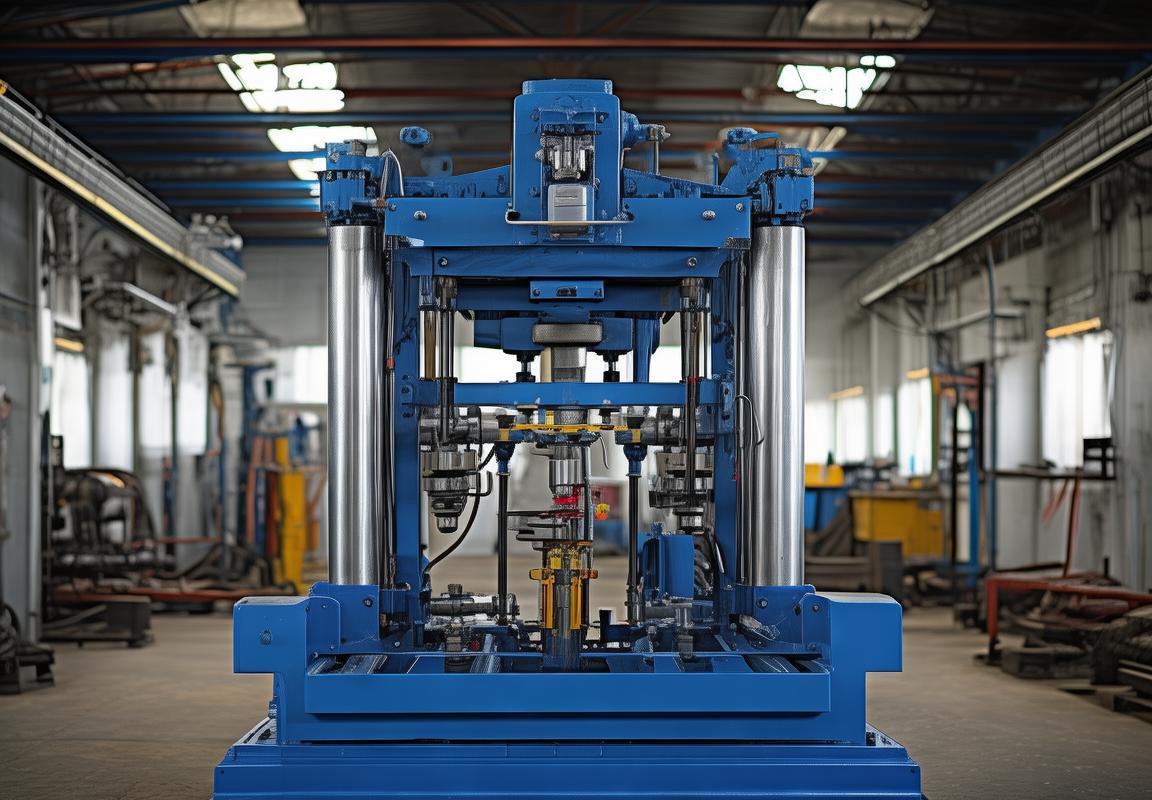
The Manufacturing Process: From Raw Materials to Ready Machine
In the intricate world of hydraulic press manufacturing, the journey from raw materials to a fully operational machine is a testament to precision and engineering prowess. This process involves several critical stages, each contributing to the final product’s quality and functionality.
The foundation of any hydraulic press lies in the materials chosen for its construction. Steel, renowned for its strength and durability, is typically the material of choice. The selection process involves evaluating different grades of steel, each with its own set of properties that can influence the press’s performance and lifespan. Once the appropriate steel is selected, it undergoes a series of treatments to enhance its strength and resistance to wear and tear.
Once the raw steel is prepared, the manufacturing process begins with the cutting and shaping of the metal. CNC (Computer Numerical Control) machines are often used for this task, allowing for precision cuts and shaping that would be impossible by hand. The steel is cut into the necessary lengths and shapes, creating the basic components of the hydraulic press, such as the frame, cylinders, and other structural parts.
The next step involves welding these components together. Skilled welders meticulously join the pieces, ensuring that the joints are strong and free from defects. This is a critical phase, as any weaknesses in the welds could compromise the press’s integrity and safety. Advanced welding techniques, such as TIG (Tungsten Inert Gas) or MIG (Metal Inert Gas), are often employed to achieve a high-quality weld.
After the welding is complete, the frame and other structural components are subjected to heat treatment. This process, which can include annealing, normalizing, or quenching, helps to relieve stress and improve the material’s mechanical properties. It ensures that the press can withstand the high pressures and forces it will encounter during operation.
The hydraulic system is then assembled, which is the heart of the hydraulic press. It consists of the hydraulic pump, which delivers the pressure, and the hydraulic cylinders, which apply that pressure to the workpiece. The pump and cylinders are precision-engineered to ensure a smooth and consistent flow of hydraulic fluid. The fluid, often a type of oil, is chosen for its ability to transmit pressure efficiently and its lubricating properties, which reduce friction and wear.
The control system is another key component. It includes the valves, switches, and other electrical components that allow for the precise control of the press’s operation. These systems are designed to ensure safety, allowing operators to control the press’s speed, pressure, and cycle time. The integration of modern control systems can even include programmable logic controllers (PLCs) and human-machine interfaces (HMIs) for enhanced automation and user interaction.
Once the hydraulic and control systems are in place, the press is assembled. This involves the careful alignment of all components to ensure proper function. The electrical components are connected, and the press is tested for leaks, which could indicate a flaw in the hydraulic system. Any issues discovered during this testing phase are addressed before the press moves on to the next stage.
The final touches include the application of protective coatings to prevent corrosion and improve the appearance of the hydraulic press. These coatings can range from simple paint jobs to more durable powder coatings, which offer better resistance to environmental factors.
Before the press is deemed ready for use, it undergoes a rigorous quality control inspection. This includes checking the structural integrity, hydraulic performance, and control system functionality. Any deviations from the specifications are corrected, and the press is fine-tuned to ensure it meets the highest standards of precision and safety.
In conclusion, the manufacturing process of a hydraulic press is a meticulous affair, involving the careful selection of materials, precision cutting and welding, heat treatment, assembly of the hydraulic and control systems, and thorough quality control. Each step is crucial in ensuring that the final product is not only robust and reliable but also capable of performing its intended function with precision and efficiency.
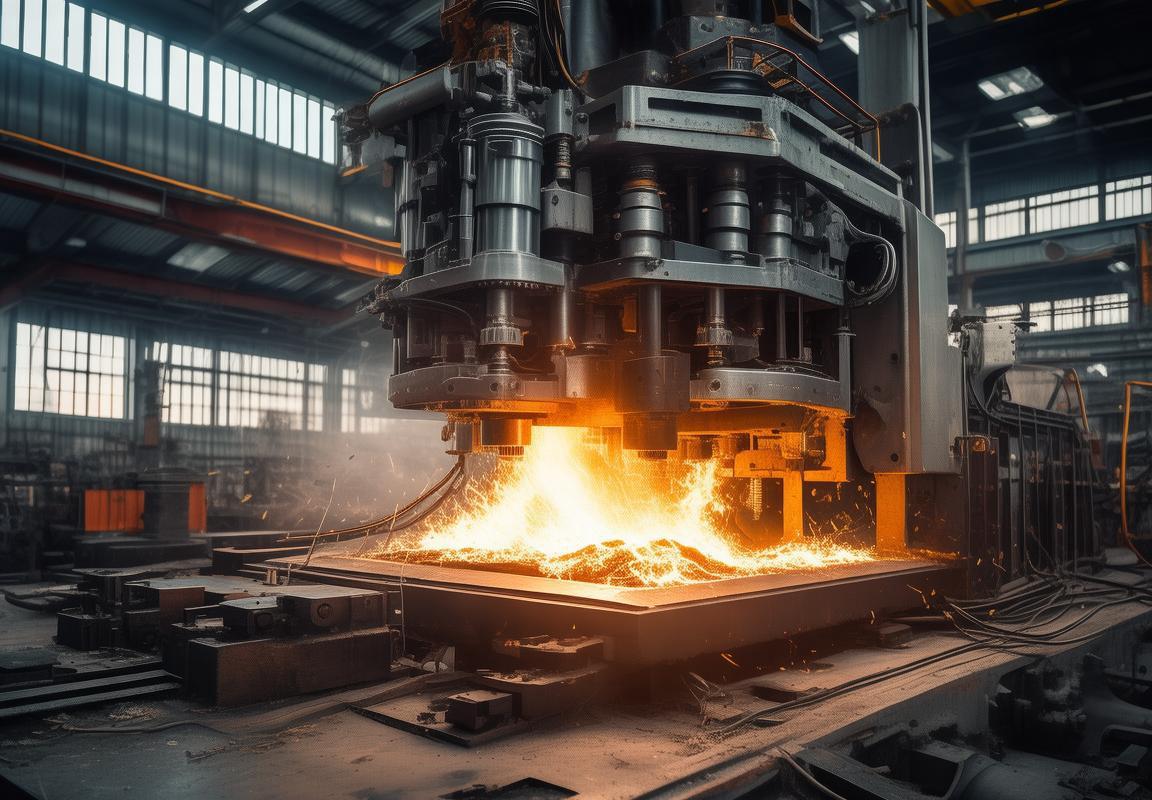
Advancements in Technology: Enhancing Efficiency and Precision
In the ever-evolving world of hydraulic press manufacturing, technology has played a pivotal role in driving efficiency and precision. From the earliest mechanical presses to the cutting-edge machines of today, advancements have reshaped the industry. Here’s a look at some of the key technological breakthroughs that have transformed the landscape.
The Rise of Digital Control SystemsDigital control systems have revolutionized the hydraulic press manufacturing process. These systems, often integrated with computers and software, allow for precise control over the press’s operation. With programmable logic controllers (PLCs) and advanced software, operators can set up and monitor presses with a high degree of accuracy, reducing the margin for human error and ensuring consistent performance.
Automated Material HandlingThe integration of automated material handling systems has significantly boosted efficiency in hydraulic press manufacturing. These systems use robotics and conveyors to transport materials to and from the presses, minimizing the time spent on manual handling. Automated guided vehicles (AGVs) and robotic arms can pick up raw materials, place them in the press, and remove the finished parts, streamlining the production line and reducing labor costs.
Improved Pumping SystemsHydraulic presses rely on robust pumping systems to generate the necessary pressure for their operations. Over the years, there have been significant improvements in pump technology. Variable displacement pumps, for instance, allow for precise control over the flow rate and pressure, optimizing the press’s performance. These pumps can adjust their output based on the press’s needs, ensuring that resources are used efficiently and reducing energy consumption.
Enhanced Material Forming CapabilitiesModern hydraulic presses are not just about brute force; they are also about precision and material integrity. Advances in design and materials science have led to presses that can handle a wider range of materials and applications. For example, the development of high-pressure hydraulic systems has enabled presses to work with more exotic metals and alloys, pushing the boundaries of what is possible in metal forming.
Smart Sensors and DiagnosticsThe incorporation of smart sensors has brought a new level of intelligence to hydraulic presses. These sensors can monitor the health of the press and its components in real-time, providing operators with valuable data. If a problem arises, such as a leak or a misalignment, the sensors can alert the operator or even shut down the machine to prevent damage. This proactive approach to maintenance minimizes downtime and extends the life of the equipment.
Energy Efficiency InitiativesWith growing concerns about energy consumption and environmental impact, manufacturers have focused on making hydraulic presses more energy-efficient. This includes the use of regenerative systems that capture and reuse energy during the press cycle, reducing overall energy consumption. Additionally, the development of more efficient motors and pumps has helped to lower the carbon footprint of hydraulic press manufacturing.
Customization and FlexibilityThe ability to customize hydraulic presses to specific applications has become a hallmark of modern manufacturing. Advances in design allow for the creation of presses that are tailored to the unique requirements of different industries, from automotive to aerospace. This level of customization ensures that the presses are optimized for their intended use, enhancing both the precision of the manufacturing process and the quality of the final product.
Machine Learning and Predictive AnalyticsThe integration of machine learning and predictive analytics into hydraulic press manufacturing is a relatively new but rapidly growing area. By analyzing data from the press’s operation, these systems can predict potential issues before they occur, allowing for preemptive maintenance. This not only improves the longevity of the equipment but also reduces the risk of production delays.
In conclusion, the advancements in technology within hydraulic press manufacturing have not only increased efficiency but have also made the presses more reliable, precise, and adaptable. As technology continues to evolve, we can expect even more innovative solutions that will further transform the industry.
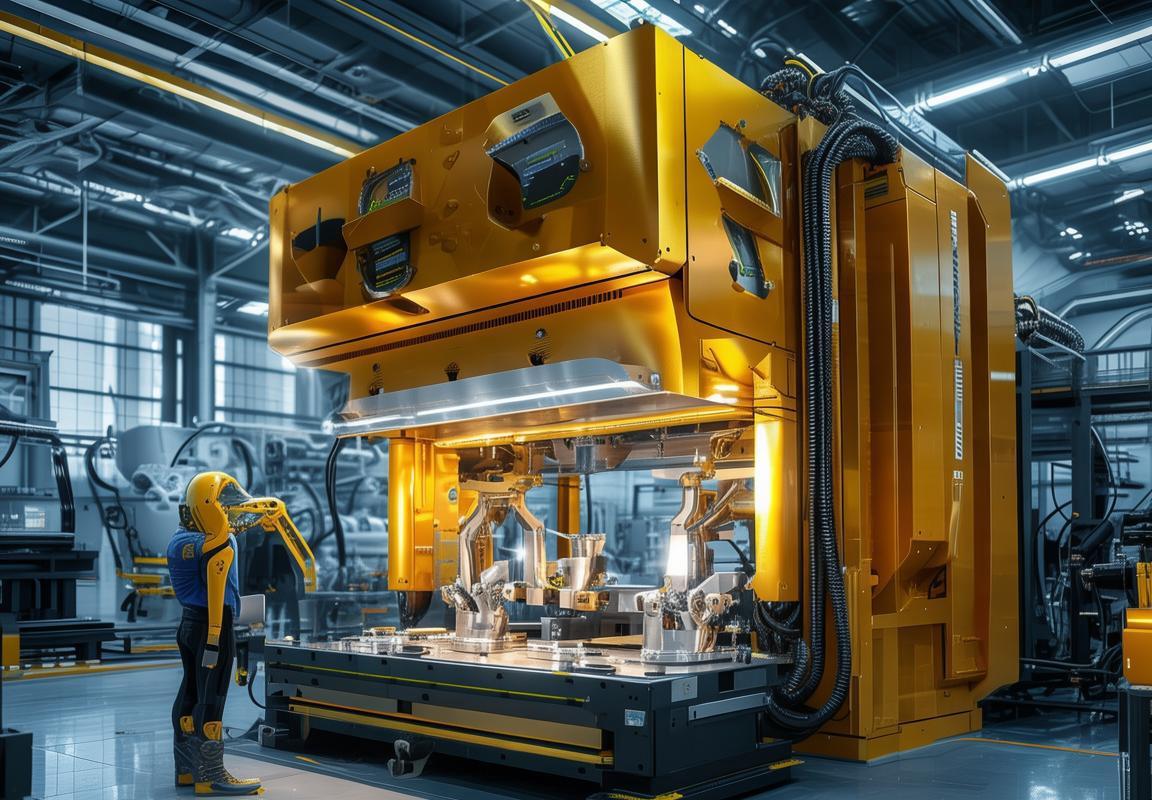
The Role of Hydraulic Presses in Various Industries
Hydraulic presses are a marvel of mechanical engineering, playing a pivotal role across a vast array of industries. From the automotive sector to aerospace, these robust machines are the backbone of manufacturing processes, ensuring precision and efficiency in production. Here’s a look at how hydraulic presses impact various industries:
In the automotive industry, hydraulic presses are essential for stamping and forming operations. They are used to shape metal sheets into the complex shapes required for car bodies, door panels, and other structural components. The ability to apply tremendous force with precision makes hydraulic presses ideal for these tasks, as they can handle the high pressures needed without compromising on the accuracy of the parts.
The aerospace industry relies on hydraulic presses for the manufacturing of aircraft components, such as wings, fuselages, and landing gear. These presses can work with materials like aluminum, titanium, and composites, which are commonly used in aerospace applications. The precision and strength of hydraulic presses ensure that these critical components meet stringent quality and safety standards.
In the construction equipment industry, hydraulic presses are integral to the production of excavators, cranes, and other heavy machinery. These machines require parts that can withstand immense forces and stresses. Hydraulic presses allow manufacturers to forge and form these components with the necessary strength and durability, ensuring reliability and longevity in the field.
The packaging industry benefits greatly from hydraulic presses as well. These machines are used to create molds for plastic containers, closures, and other packaging materials. The high pressure and precision of hydraulic presses enable the creation of intricate designs and precise dimensions, contributing to the efficiency and effectiveness of packaging processes.
The medical device sector is another area where hydraulic presses are indispensable. These presses are used to manufacture precision parts for surgical instruments, prosthetics, and orthopedic devices. The delicate nature of these parts requires a high degree of control and accuracy, which hydraulic presses provide, ensuring the quality and functionality of the medical devices.
The metalworking industry depends on hydraulic presses for a range of operations, including metal rolling, forging, and pressing. These presses are capable of handling materials like steel, brass, and copper, and are used to produce products from simple washers to complex mechanical parts. The consistency and control of hydraulic presses are crucial in achieving the tight tolerances required for high-quality metal products.
The energy sector also benefits from hydraulic press technology. In the production of wind turbine blades, for example, hydraulic presses are used to bend and shape large sheets of composite materials into the curved profiles necessary for the blades. These presses must operate with incredible precision to ensure that the blades can withstand the extreme forces of wind and weather.
In the electronics industry, hydraulic presses contribute to the production of printed circuit boards (PCBs) and other delicate electronic components. These machines can apply the necessary force to bond and laminate materials without damaging the fine lines and circuits that are so critical to the performance of electronic devices.
The food and beverage industry utilizes hydraulic presses for the manufacturing of packaging materials and machinery. These presses are used to create the molds for plastic bottles, cans, and other containers. The ability to form these containers with tight tolerances and high strength is vital for ensuring the safety and shelf life of the products they contain.
Hydraulic presses also have a role in the recycling industry. They are used to crush and compact materials like aluminum cans and plastic bottles, making recycling processes more efficient. The force exerted by these presses helps to reduce the volume of recyclables, making them easier to transport and process.
Finally, the military and defense sectors rely on hydraulic presses for the production of high-strength, lightweight materials used in armor and vehicles. The precision and power of these machines ensure that the components are up to the challenge of protecting soldiers and equipment in the field.
In summary, the versatility and strength of hydraulic presses make them a cornerstone in numerous industries. Their ability to handle a wide range of materials and perform complex operations with precision and control is what sets them apart as essential tools in the modern manufacturing landscape.
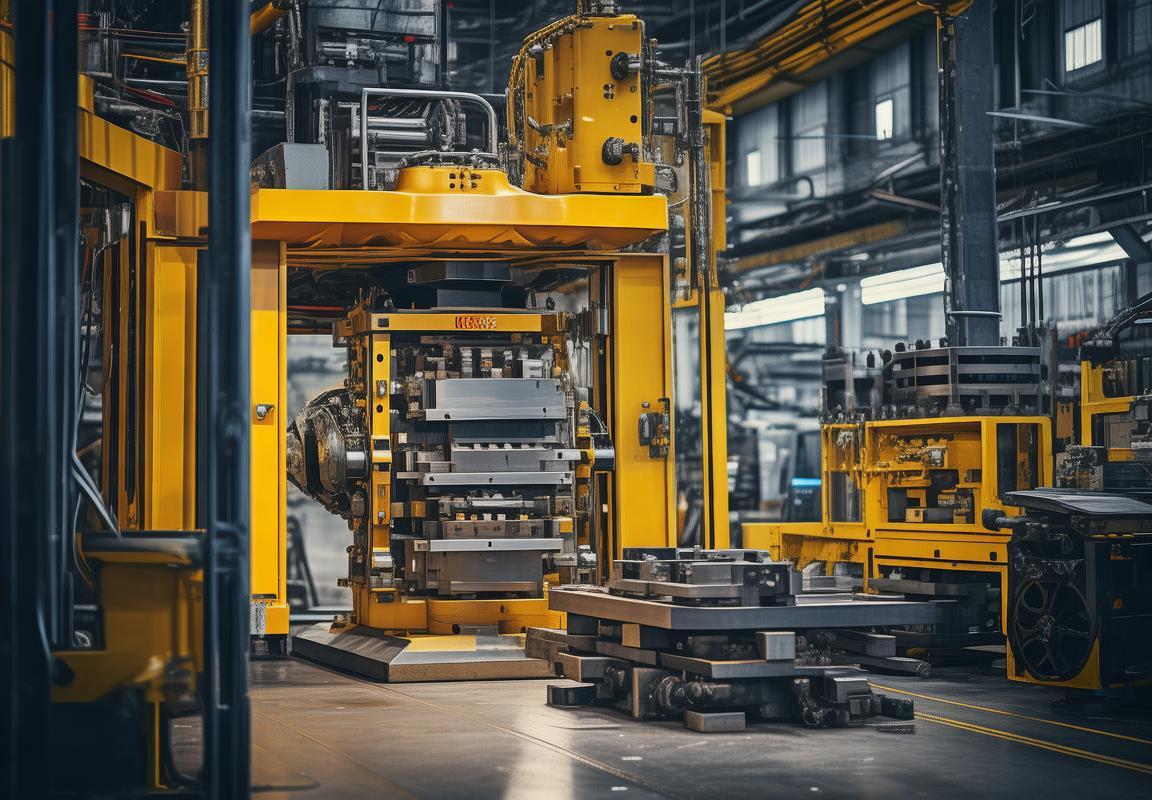
Ensuring Safety and Quality in Hydraulic Press Manufacturing
In the realm of hydraulic press manufacturing, safety and quality are paramount. Ensuring that these two aspects are meticulously addressed throughout the production process is crucial for the longevity and reliability of the machines. Here’s a closer look at how these factors are managed:
The meticulous inspection of materials is a cornerstone of safety in hydraulic press manufacturing. High-quality steel, often sourced from reputable suppliers, is selected for its durability and resistance to wear. This raw material undergoes rigorous testing to ensure it meets the stringent specifications required for the press’s structural integrity. Any inconsistencies or defects are immediately identified and discarded, preventing potential hazards during operation.
Precision engineering is another key element in maintaining safety and quality. The components that make up a hydraulic press, such as cylinders, pistons, and seals, must be perfectly matched to ensure seamless operation. Specialized machinery is used to machine these parts with extreme accuracy, often to tolerances of just a few micrometers. This level of precision not only enhances the performance of the press but also reduces the risk of failure.
Regular maintenance protocols are established to keep hydraulic presses running smoothly and safely. These protocols include scheduled checks of fluid levels, pressure readings, and the condition of seals and hoses. By adhering to these routines, manufacturers can catch and address potential issues before they escalate into major problems. This proactive approach not only preserves the quality of the press but also minimizes downtime.
Safety training is an integral part of the manufacturing process. Employees are educated on the proper handling of tools and machinery, as well as the potential hazards associated with hydraulic press operation. From the moment they begin their training, workers are taught to follow established safety procedures, such as wearing appropriate protective gear and ensuring that emergency stop buttons are readily accessible.
The design of hydraulic presses plays a crucial role in safety and quality. Modern presses are engineered with safety features like emergency egress systems, which allow operators to quickly exit the machine in the event of an emergency. Additionally, protective guards are installed around moving parts to prevent accidental contact. These design elements are not only there to meet regulatory standards but also to provide peace of mind for both operators and manufacturers.
Quality control is a continuous process that spans from the initial stages of material selection to the final assembly of the hydraulic press. During assembly, each component is inspected for fit, finish, and functionality. Advanced testing equipment, such as pressure and leak testing, is used to verify the integrity of the hydraulic system. Only when all components meet the required standards is the press deemed ready for the next phase of production.
In the realm of hydraulic press manufacturing, adherence to international standards is non-negotiable. Compliance with certifications like ISO 9001 ensures that the manufacturing process is not only safe but also meets the highest quality benchmarks. These standards dictate everything from the cleanliness of the manufacturing environment to the documentation of every step in the production process.
The final assembly of the hydraulic press is a delicate balance of art and science. Skilled technicians carefully align and connect the various components, ensuring that the press operates with the precision and power it was designed for. Throughout this process, quality checks are performed at regular intervals to confirm that everything is functioning as intended.
In conclusion, the safety and quality of hydraulic press manufacturing are achieved through a combination of meticulous material selection, precision engineering, regular maintenance, comprehensive safety training, thoughtful design, rigorous quality control, adherence to international standards, and the skillful assembly of components. By focusing on these elements, manufacturers can produce hydraulic presses that are not only safe to operate but also deliver exceptional performance and durability.
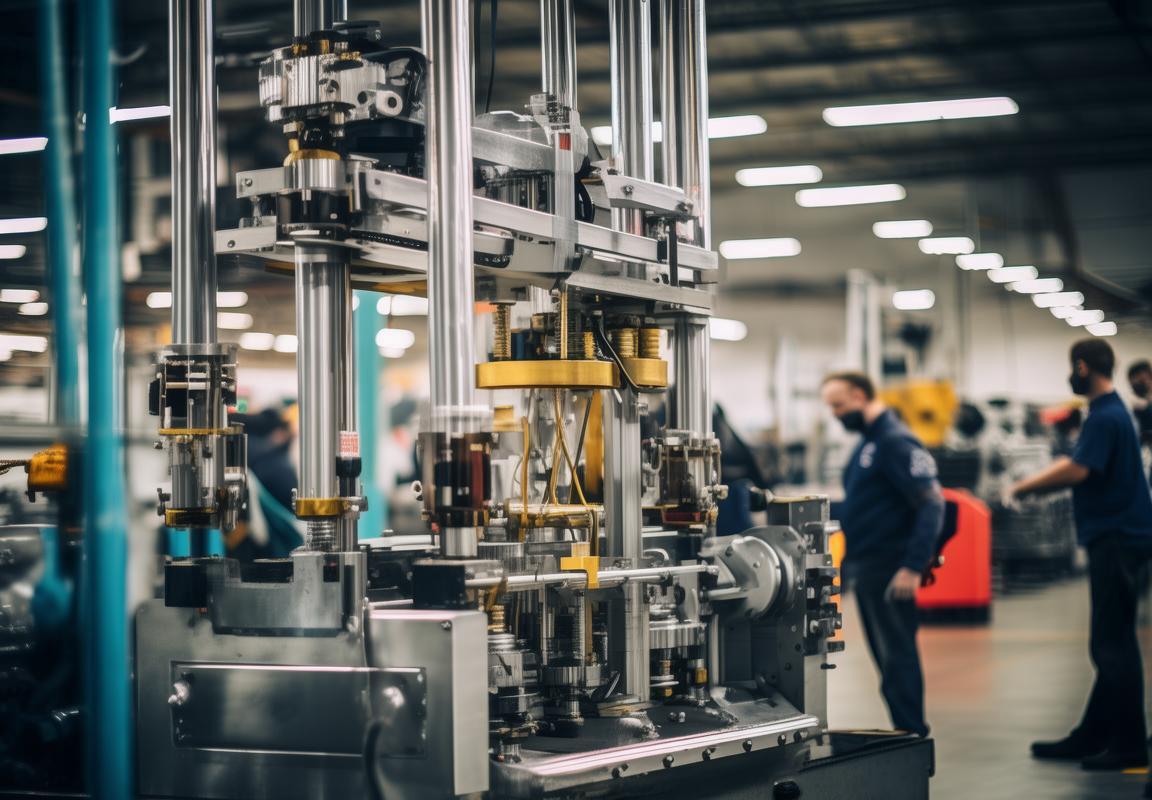
The Future of Hydraulic Presses: Innovations and Trends
In the ever-evolving landscape of hydraulic press manufacturing, staying ahead of the curve is paramount. Innovations and trends are reshaping the industry, pushing the boundaries of what these powerful machines can achieve. From the integration of smart sensors to the adoption of sustainable materials, the future of hydraulic presses is marked by a blend of technological advancement and environmental consciousness.
Hydraulic presses have long been the backbone of industries ranging from automotive to aerospace, but their evolution continues to open new avenues for efficiency and precision. Here’s a glimpse into some of the groundbreaking innovations and trends that are shaping the future of hydraulic press manufacturing.
Automation has become a cornerstone in hydraulic press technology. With the integration of advanced robotics and automated systems, presses are now capable of performing complex tasks with minimal human intervention. This not only increases productivity but also ensures consistency in the quality of output. From loading raw materials to monitoring the press cycle, automation is streamlining operations and reducing the risk of human error.
Smart sensors and Internet of Things (IoT) technology are adding a new layer of intelligence to hydraulic presses. These sensors can monitor the press’s performance in real-time, detecting anomalies or potential malfunctions before they lead to costly downtime. The data collected can be analyzed to optimize the press’s efficiency and longevity, providing insights that were once impossible to gather.
Energy efficiency has become a significant focus in the manufacturing industry, and hydraulic presses are no exception. Newer models are being designed with energy-saving technologies in mind, reducing power consumption and lowering operational costs. From variable displacement pumps to eco-friendly hydraulic fluids, these advancements are making hydraulic presses more sustainable than ever before.
The demand for lightweight and high-strength materials has pushed the boundaries of hydraulic press design. Aluminum and composite materials are being used in the construction of hydraulic presses, which not only reduce the weight of the machine but also enhance its structural integrity. This shift not only allows for greater precision but also contributes to a reduction in the environmental impact of manufacturing processes.
Precision is crucial in industries like aerospace and medical device manufacturing, and hydraulic presses have stepped up to meet these demands. The development of precision gauges and calibration systems has ensured that the presses can deliver the tightest tolerances required. This precision is further enhanced by the use of high-quality components and the implementation of rigorous quality control protocols.
Customization is another trend reshaping hydraulic press manufacturing. Modern presses are no longer one-size-fits-all solutions. Manufacturers are offering more customizable options, allowing users to tailor the press to their specific application needs. This could mean everything from adjustable stroke lengths to specialized fixtures, making each hydraulic press a truly versatile tool.
In the realm of safety, hydraulic press manufacturers are focusing on reducing the risk of accidents and injuries in the workplace. Safety features such as emergency stop systems, pressure relief valves, and enclosed operation areas are becoming standard. Additionally, ergonomic designs and the incorporation of safety interlocks are making hydraulic presses safer for operators.
The integration of virtual reality (VR) and augmented reality (AR) into the manufacturing process is also on the rise. These technologies are used for training purposes, allowing operators to familiarize themselves with the press without the risk of injury or damage. VR and AR simulations can replicate real-world scenarios, ensuring that operators are prepared for any challenge they might face.
The rise of additive manufacturing, or 3D printing, has also had an impact on hydraulic press manufacturing. While hydraulic presses are often used to create large, complex parts, the addition of 3D printing capabilities can open up new possibilities for customization and prototyping. The combination of these two technologies could lead to more innovative and efficient manufacturing processes.
As the industry continues to advance, there’s a growing emphasis on environmental responsibility. Recycling and waste reduction programs are becoming more prevalent, and the use of eco-friendly materials in the construction of hydraulic presses is gaining traction. The industry is also looking towards renewable energy sources to power these machines, further reducing the carbon footprint.
In conclusion, the future of hydraulic presses is a tapestry of innovation, efficiency, and environmental stewardship. With each passing year, these machines are becoming more powerful, precise, and sustainable, setting the stage for a new era of manufacturing possibilities.
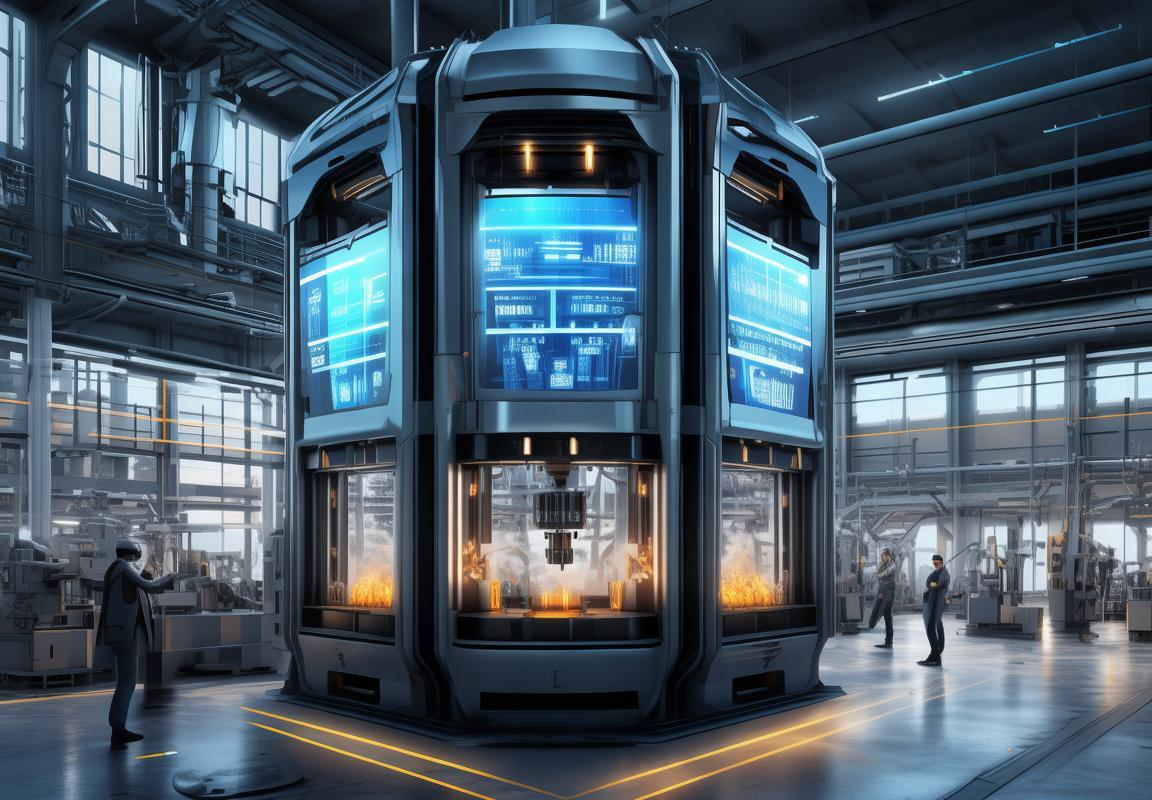
Conclusion: The Unseen Workhorse of Modern Manufacturing
In the vast landscape of modern manufacturing, there’s a humble yet indispensable machine that often goes unnoticed—the hydraulic press. This unsung hero of the industrial world has been quietly shaping the products we rely on daily. Its role is crucial, yet its presence is often taken for granted. Let’s delve into the unseen workhorse of modern manufacturing and reflect on its significance.
The hydraulic press has been a cornerstone of manufacturing for over a century, evolving alongside the industries it serves. Its ability to exert immense force with precision has made it a versatile tool in countless applications. From the smallest components to the largest structures, hydraulic presses have played a pivotal role in shaping the products we use every day.
In the realm of automotive manufacturing, hydraulic presses are instrumental in the production of car bodies, engines, and other complex parts. The precision and strength they provide are essential for creating parts that meet stringent quality standards. Similarly, in the aerospace industry, hydraulic presses are used to form and shape lightweight yet durable materials for aircraft components, contributing to the industry’s push for efficiency and sustainability.
The construction industry also relies heavily on hydraulic presses for tasks such as bending steel bars and forming metal structures. These presses ensure that the materials used in buildings and infrastructure are both strong and uniform, which is critical for the longevity and safety of these projects.
Hydraulic presses are not just limited to heavy-duty applications; they are also integral to the production of everyday items. From the hinges on your kitchen cabinets to the bolts in your bicycle, hydraulic presses have been involved in the manufacturing process. Their ability to apply consistent pressure over large areas makes them ideal for creating parts with intricate details and uniformity.
Ensuring safety and quality in hydraulic press manufacturing is paramount. These machines are designed to operate under high pressure and temperatures, and any flaw in their construction can lead to catastrophic failures. Manufacturers must adhere to strict quality control measures to guarantee that each press meets the highest safety standards.
One of the key aspects of safety is the design of the hydraulic press itself. Modern presses are equipped with fail-safe mechanisms that prevent the machine from operating if there is a malfunction. These include pressure relief valves, emergency stop buttons, and safety guards that protect operators from moving parts.
Quality control during manufacturing involves rigorous testing and inspection. Each component of the hydraulic press is checked for accuracy and durability. Advanced materials and precision engineering are used to ensure that the press can withstand the demands of its intended use.
As we look to the future, the role of hydraulic presses in modern manufacturing is set to expand. Innovations in technology are driving the development of more efficient and precise presses. One such innovation is the integration of computer numerical control (CNC) systems, which allow for greater automation and customization in the manufacturing process.
Another trend is the use of advanced materials, such as high-strength alloys and composites, which can handle higher pressures and temperatures. This not only increases the lifespan of the presses but also allows them to be used in more demanding applications.
The future of hydraulic presses also includes a focus on energy efficiency and sustainability. As the world becomes more environmentally conscious, manufacturers are seeking ways to reduce the carbon footprint of their operations. This includes developing presses that consume less energy and are easier to recycle at the end of their life cycle.
In conclusion, the hydraulic press may be an unsung hero in the world of manufacturing, but its impact is undeniable. Its ability to apply immense force with precision has made it an essential tool in countless industries. As technology continues to advance, the hydraulic press will undoubtedly play an even more significant role in shaping the products and technologies of the future. Its presence may be unseen, but its work is indispensable.